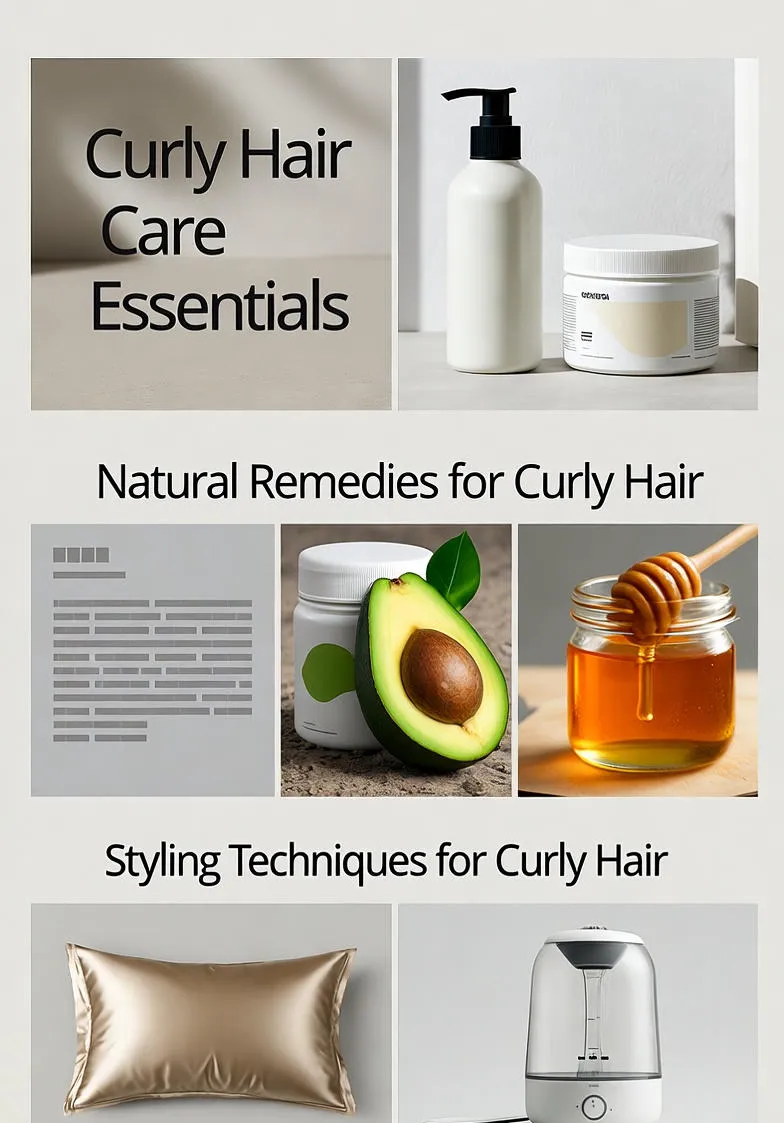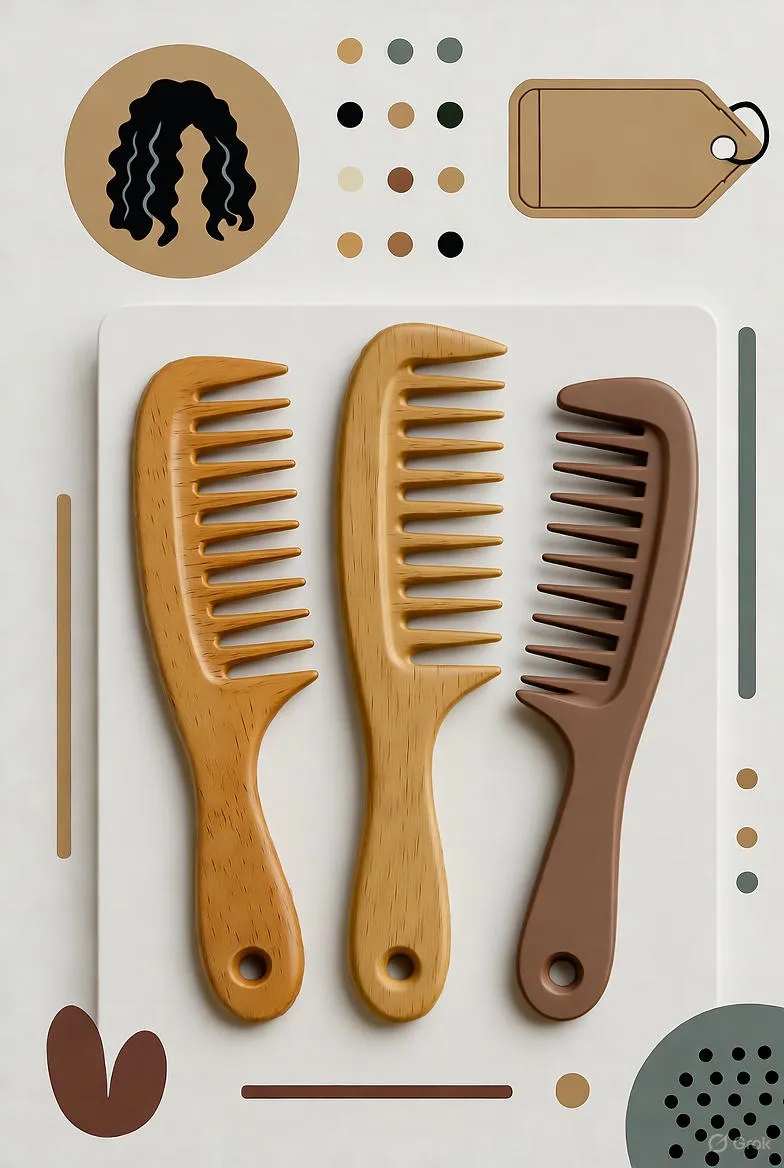Ultimate Guide: How to Reduce Frizz in Curly Hair Naturally and Effectively
Struggling with frizzy curls? Unlock the ultimate guide to reducing frizz in curly hair with expert tips, natural remedies, and styling hacks for smooth, defined locks every day.

Understanding the Root of Frizz in Curly Hair
Curly hair is a beautiful, unique texture that brings volume and personality to any style. However, it often comes with the frustrating challenge of frizz. Frizz occurs when the hair cuticle—the outer layer of the hair shaft—lifts, allowing moisture from the air to penetrate the hair strand unevenly. This is especially common in curly hair because the natural shape creates more surface area exposed to environmental factors like humidity, dryness, and friction.
To effectively combat frizz, it's essential to address both the external triggers and internal imbalances. External factors include weather conditions, such as high humidity or dry air, which can cause curls to swell or shrink unpredictably. Internal issues might involve a protein-moisture imbalance, where hair lacks sufficient hydration or has too much protein buildup, leading to brittle strands that frizz easily.
Recognizing these causes is the first step toward smoother, more defined curls. By incorporating targeted strategies into your routine, you can minimize frizz and enhance your natural curl pattern, resulting in healthier, bouncier hair that turns heads.
Building a Solid Foundation: Daily Hair Care Habits
Your daily routine sets the tone for frizz-free curls. Start with gentle cleansing to avoid stripping natural oils, which are crucial for curl health. Opt for sulfate-free shampoos that cleanse without over-drying. Washing every 2-3 days, rather than daily, helps preserve those essential oils.
After shampooing, focus on deep conditioning. Apply a rich conditioner from mid-lengths to ends, avoiding the scalp to prevent greasiness. Leave it on for at least 3-5 minutes—or longer under a shower cap for a spa-like treatment. This step replenishes moisture, smooths the cuticle, and reduces frizz by up to 50% with consistent use.
- Gentle Detangling: Always detangle in the shower while hair is wet and coated in conditioner. Use a wide-tooth comb or your fingers to gently work through knots, starting from the ends and moving upward. This prevents breakage and maintains curl integrity.
- Pat Dry, Don't Rub: After rinsing, gently squeeze excess water from your curls using a microfiber towel or an old T-shirt. Rubbing with a regular towel creates friction, which lifts the cuticle and invites frizz.
Incorporating these habits not only tames frizz but also promotes long-term hair health, making your curls more resilient to daily stressors.
Choosing the Right Products for Your Curl Type
Not all products are created equal when it comes to curly hair. The key is selecting items formulated for moisture retention and hold without weighing down your curls. Look for ingredients like shea butter, argan oil, aloe vera, and glycerin, which hydrate and seal the cuticle.
For type 2 waves to type 4 coils, a lightweight leave-in conditioner is a must. Apply it to soaking wet hair to lock in moisture before it evaporates. Follow with a curl cream or gel that provides definition and anti-humidity protection. These products act as a barrier against environmental moisture, keeping frizz at bay.
Product Recommendations by Curl Pattern
- Type 2 (Wavy): Lightweight mousses or creams like those with coconut oil to enhance wave definition without heaviness.
- Type 3 (Curly): Medium-hold gels infused with flaxseed for bounce and shine.
- Type 4 (Coily): Thick butters and oils, such as mango butter, to combat extreme dryness and shrinkage.
Avoid silicones if your hair is prone to buildup, as they can coat strands and exacerbate frizz over time. Instead, choose water-based formulas that rinse clean. Remember, a little goes a long way—over-application can lead to greasy roots and limp curls.
Mastering Styling Techniques to Lock in Smoothness
Styling is where the magic happens for frizzy curls. The goal is to encourage clumping, where individual strands group into defined curls, minimizing flyaways. Begin with the 'praying hands' method: rub product between your palms, then smooth it over sections of wet hair, 'praying' your hands together to encourage curl formation.
Plopping is another game-changer. After applying products, place a cotton T-shirt or plopping towel over your head, tuck your curls inside, and secure it for 20-30 minutes. This diffuses weight from your curls, promoting volume at the roots and reducing overall frizz.
- Sectioning: Divide hair into 4-6 sections to ensure even product distribution and prevent missed spots that frizz later.
- Scrunching: Cup sections of hair in your palm and gently scrunch upward to encourage curl activation as it dries.
- Diffusing: If using a blow dryer, attach a diffuser nozzle on low heat and speed. Hover it over sections, flipping your head upside down for root lift.
For air-drying enthusiasts, patience is key—allow 24 hours for full curl set, refreshing with a water-based spray if needed. These techniques not only reduce frizz but also save time on touch-ups throughout the day.
Natural Remedies and Home Hacks for Budget-Friendly Frizz Control
Sometimes, the best solutions are right in your kitchen. Natural remedies offer gentle, chemical-free ways to nourish curls and combat frizz without breaking the bank.
A classic DIY mask combines avocado, honey, and olive oil. Mash half an avocado with one tablespoon each of honey and oil, apply to damp hair, and leave for 20 minutes before rinsing. Avocado's fats deeply moisturize, honey draws in hydration, and olive oil seals it all in, leaving curls soft and frizz-free.
- Aloe Vera Rinse: Mix fresh aloe gel with water for a post-shower spritz. It soothes the scalp and adds lightweight moisture.
- Apple Cider Vinegar Clarifier: Dilute 1 part ACV with 4 parts water to remove buildup monthly, restoring shine and reducing frizz.
- Banana Mask: Blend a ripe banana with yogurt for potassium-rich hydration that strengthens strands from within.
Beyond masks, lifestyle tweaks amplify results. Sleep on a silk or satin pillowcase to minimize overnight friction—cotton absorbs moisture and causes morning frizz. In humid climates, a humidity-fighting serum with dimethicone can create a protective shield.
Addressing Common Frizz Triggers and Long-Term Prevention
Frizz isn't just about products; environmental and habitual factors play a huge role. High humidity causes curls to absorb excess moisture, leading to puffiness. Counter this with anti-humidity sprays containing polymers that repel water.
Dry air in winter or from indoor heating strips natural oils, so invest in a humidifier to maintain 40-60% room humidity. Heat styling tools are frizz culprits—limit use and always apply a heat protectant. If you must flat-iron or curl, opt for ionic tools that seal the cuticle with negative ions.
Nutrition matters too. A diet rich in omega-3s (from salmon or flaxseeds), biotin (eggs, nuts), and vitamin E (avocados) supports hair strength from the inside out. Stay hydrated by drinking at least 8 glasses of water daily to keep strands plump and resistant to frizz.
Seasonal Adjustments
Summer: Lightweight gels and frequent trims to remove split ends that frizz more in heat.
Winter: Heavy oils and weekly deep conditioning to battle dryness.
Tracking your hair's response through a journal can help refine your approach, ensuring sustained frizz reduction year-round.
When to Seek Professional Help
Despite your best efforts, persistent frizz might signal underlying issues like damage from color treatments or scalp conditions. A curly hair specialist, or 'DevaCut' stylist, can provide a customized cut that enhances your pattern and reduces weight-induced frizz.
Professional treatments like keratin smoothing or Olaplex repairs can restore balance without harsh chemicals. Consult a dermatologist if frizz accompanies itchiness or shedding, as it could indicate dryness or allergies.
Investing in expert advice empowers you with personalized strategies, turning frizzy challenges into curly confidence.
Embracing Your Curls: Final Thoughts
Reducing frizz in curly hair is a journey of experimentation and self-love. By understanding causes, adopting mindful habits, and using the right tools, you can achieve defined, touchable curls that feel as good as they look. Consistency is your ally—results build over weeks, rewarding you with effortless style and reduced maintenance.
Celebrate the diversity of your texture. Curly hair isn't just hair; it's a statement of individuality. With these tips, step out with poise, knowing your frizz is tamed and your curls are thriving.


